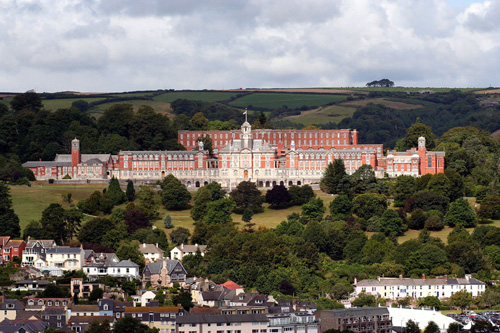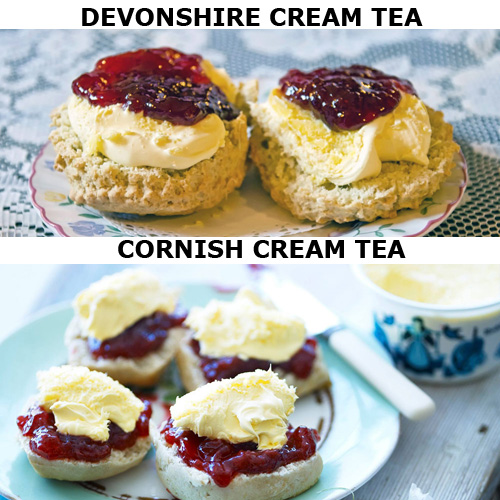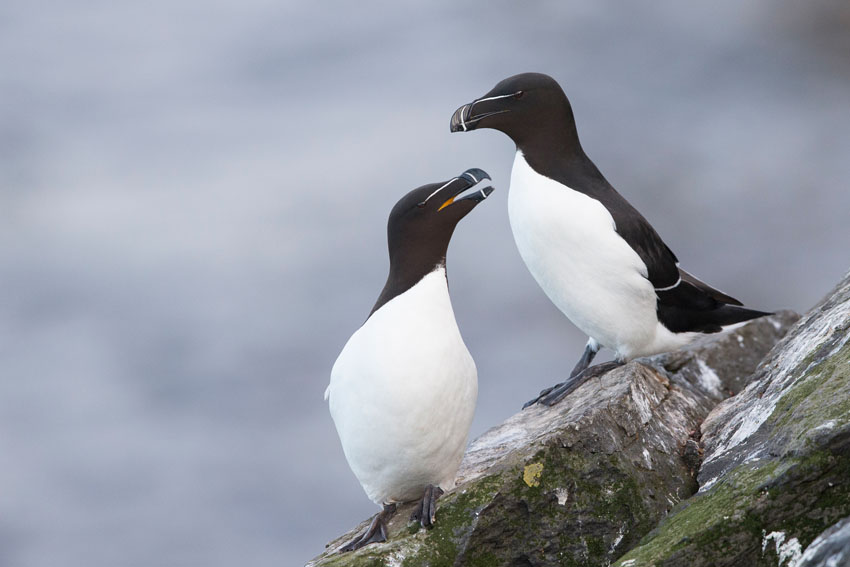




Back to the Devon Page

- The Royal Connection
- Devon Eats
- Owlbut's Birdwatch
- Devon VIPs
 If having the word "Royal" in its name
wasn't enough, the Britannia Royal Naval College at Dartmouth can list as its previous cadets, King George V, King George VI, King Charles III, Prince Andrew and
Prince William. Not only that but, as you may have heard, it was while he was a naval cadet there in 1939 that the late Prince Philip met Princess Elizabeth as
she then was.
If having the word "Royal" in its name
wasn't enough, the Britannia Royal Naval College at Dartmouth can list as its previous cadets, King George V, King George VI, King Charles III, Prince Andrew and
Prince William. Not only that but, as you may have heard, it was while he was a naval cadet there in 1939 that the late Prince Philip met Princess Elizabeth as
she then was.
Royal Navy officer training has been taking place in Dartmouth since 1863 and since 1998 it has been the sole centre of Royal Navy officer training. An old
wooden ship, HMS Britannia, was moored in the River Dart as the first base and in 1864 another wooden hulk, HMS Hindostan, was added. The current stone buildings. as seen in
the photo, were completed in 1905 and the first cadets arrived in September 1905. The ship now moored in the River Dart still bears the name "Hindostan" although it is a
more modern minehunter class. The college was bombed during WWII and cadets moved to Cheshire until 1946.
Should you wish to consider a career as an officer in the Royal Navy you would need to have at least 72 UCAS points, as at 2021. Then you go through
an interview board at the Admiralty where you would undergo physical fitness tests, mental aptitude tests and a medical examination. Most cadets join after uni
but some join directly from secondary school. You can join between the ages of 18 and 39 which basically adds yet another reason as to why I won't be there.
![]() Back to the top
Back to the top
 Devon and Cornwall are famous for their cream
teas although there is a subtle difference as to how they are served. A cream tea is basically a mid-afternoon snack, popular with the upper class in olden days,
comprising of scones, clotted cream, jam and a pot of tea. As I don't drink tea, or coffee for that matter, I only make use of the edible part of a cream tea, which
I thoroughly enjoy.
Devon and Cornwall are famous for their cream
teas although there is a subtle difference as to how they are served. A cream tea is basically a mid-afternoon snack, popular with the upper class in olden days,
comprising of scones, clotted cream, jam and a pot of tea. As I don't drink tea, or coffee for that matter, I only make use of the edible part of a cream tea, which
I thoroughly enjoy.
Cream teas exist elsewhere but an authentic Devonshire or Cornish cream tea should have warm scones. The scones are not buttered. Traditionally you
would have strawberry jam, not any other flavour, and only clotted cream not whipped cream.
Clotted cream is a golden-yellow colour made by using unpasteurized cow's milk, again tradition says the milk should be from Jersey cows, and letting
it sit for up to 24 hours in a shallow pan and then slowly heating it and leaving it to cool for another 12-24 hours. The cream that rises to the surface and "clots"
is skimmed off and served and that is clotted cream. My mother had a relation who lived in Devon and each year would post us a can of clotted cream. Mother would
make scones and we would have a cream tea.
I mentioned at the start that there was a subtle difference to Cornish cream teas and Devonshire cream teas and this is it. In Devon you split your
scone in half, cover each half with clotted cream and add strawberry jam on top. In Cornwall you split your scone the same way but coat each half with jam and
put a spoonful of clotted cream on top of that. Which do you prefer?
![]() Back to the top
Back to the top
The razorbill is a medium-sized seabird. They can be seen during the breeding season around the rocky cliffs on England's
coast. The breeding season runs from March until the end of July. There are no razorbills that can be found between the Humber estuary on the east coast, clockwise
around to the Isle of Wight on the south coast. Razorbills will eat sand eels, sprats and herrings. There are 130,000 breeding pairs around the UK.
Their feathers are black on their backs and white on their fronts. They have black legs and a black, medium length beak which is powerful and chunky.
Razorbills are about 38cms in length, have a wingspan of 63 to 67 cms and weigh between 590 and 730 grams.

Seven random people who were born in Devon in the last 100 years:-
Guy Burgess (Diplomat/Spy), Sue Barker (TV Presenter/Tennis Player), Chris Martin (Singer/Songwriter - Coldplay), Miranda Hart (Actor/Comedian),
Tom Daley (Diver), Jo Pavey (Athlete) and Wayne Sleep (Dancer).
![]() Back to the top
Back to the top

